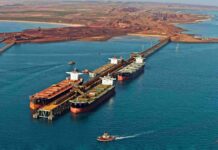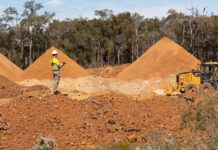Rio boosts WA-made green steel

Rio Tinto (ASX: RIO) has signed an agreement to support construction of Calix’s Zero Emissions Steel Technology (Zesty) demonstration plant in WA.
Rio Tinto will invest more than $35m to assist Calix with the demonstration plant, which also has $44.9m in support from the Australian Renewable Energy Agency (ARENA), and help the project reach a final investment decision (FID) through technical support, engineering services and advocacy.
Under the joint development agreement (JDA), the demonstration plant will be built at a site in Kwinana, south of Perth, that had been earmarked for Rio Tinto’s previously announced BioIron research and development facility and associated pilot plant.
The Kwinana location provides access to established infrastructure, including ports, and is near the NeoSmelt facility — providing the potential for downstream processing of direct reduced iron produced by the plant. Rio Tinto is one of five companies developing the NeoSmelt project, which secured ARENA funding earlier this year.
The Zesty process is compatible with lower grade iron ore and uses electric heating and hydrogen reduction to produce reduced-emissions iron — which could enable Pilbara iron ores to be used in lower-emissions steel making.
Rio Tinto iron ore chief executive Matthew Holcz says the world needs low-emissions steel if it is going to decarbonise.
“We continue to look at a range of ways Pilbara iron ores can help to do this as new technologies emerge,” he said.
Subject to FID and successful project construction, Rio will supply up to 10,000t of a range of Pilbara iron ores for use in plant commissioning and the initial testing phase of the project, as well as introductions to potential customers for downstream use of the Zesty product.
The partnership also enables Rio Tinto to exercise a non-exclusive global and perpetual licence agreement for the potential commercial use of the Zesty technology.
Calix chief executive Phil Hodgson says the JDA with Rio Tinto is a major milestone in the commercialisation of Zesty.
“It provides cash and hands-on support, including industry leading resources, expertise and market reach to progress the Zesty demonstration project,” he said.
Rio Tinto has determined that the current furnace design for BioIron requires additional development to minimise technical risks and optimise its performance.
BioIron uses raw biomass and microwave energy instead of coal to convert Pilbara iron ore to metallic iron in the steelmaking process. When combined with the use of renewable energy and carbon-circulation by fast-growing biomass, BioIron has the potential to reduce carbon emissions by up to 95% compared with the current blast furnace method.
The company continues to explore the long-term potential of the technology with ongoing research and development in partnership with the University of Nottingham and sustainable technology company Metso.
“Both projects are part of our work to reduce emissions and support the future of iron ore in Australia and the communities that depend on it,” Mr Holcz said.
Australian steel’s green wave
The deployment of green steel technologies, like Zesty, has the potential to help decarbonise a critical industry responsible for about 8% of total global carbon dioxide emissions, according to the IEA.
Last week, the WA Government opened an expression of interest (EoI) for local green steel manufacturers to supply major government projects.
WA Premier Roger Cook says locally made green iron is a key part to making WA a renewable energy powerhouse.
“Coupled with [the] government’s recent announcement that government will take an “if not, why not” approach to green steel procurement on major government projects, the Zesty green iron demonstration plant will support our efforts to diversify WA’s economy so that it can remain the strongest in the nation,” he said.






















